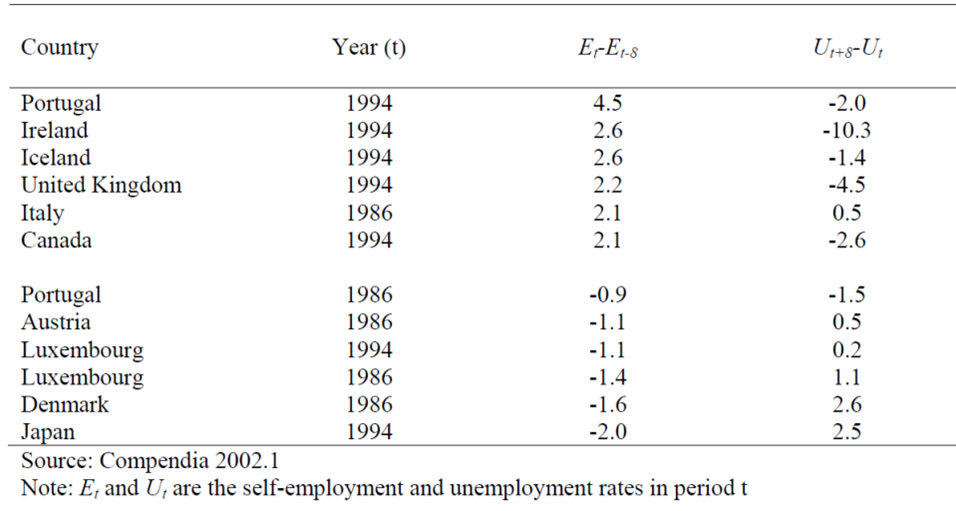TUNESS Chart of the Week (TCW), Monday April 29, 2013
There is a saying among Tunisian youth which, over the years, has been widely endorsed by the young population that “there’s no opportunity for future decent job in the country regardless of whether or not you are an educated job seeker”. Along these lines, and while the above remains an anecdotal quote, it should come as no surprise that during the latest ousting protest of former president Ben Ali, protesters were forcefully claiming, among other things, their rights for a decent employment and acceptable living conditions. The aim of this note is to shed some light on the unemployment trend by educational attainment in Tunisia.
It is obvious from the chart (fig. 1) that unemployment by educational attainment is a dynamic and college graduates are experiencing challenges finding a job. According to the chart, in 2010, college graduate unemployment rate was at alarming level of around 23%, a dramatic jump from the 4% level reported in 1994. On the contrary, based on the data collected from the US Census Bureau (Fig 2.), the unemployment rate among bachelor’s degree(or higher) holders in advanced economies like the United States follows the typical dynamic for a socio-economically stable country and averaged about 2.8% from 1994 to 2010.
Fig 1.
Fig 2.
It is beyond the scope of this note to find the economic or demographic causes of this upward curve for graduate job seekers, however, it’s important to note that a 2008 study conducted by the World Bank has attributed the high level of unemployment among college graduates to the educational program that quite often in developing countries, tend to focus more on securing a degree as opposed to teaching the right skills. Ken Robison, a recognized international leader in creativity has addressed the problem of the current global educational system that prepares generations with the wrong set of skills and has discussed their impact on the individuals as well as on a given society( the reader may want to refer to this author’s work for ample discussion). Today, government officials (in Tunisia and many other developing countries) are facing big challenge that is centered around their ability to constantly review and update their policy and actions tools to tackle this problem of increasing unemployment among graduate youth. Encouraging and laying the ground for the implementation of new creative strategies such as Self-Employment, microcredit, public work are among the numerous actions officials are expected to take in the immediately to handle this issue.
We strongly believe that the government needs to focus primarily on stimulating a culture of entrepreneurship and start-up programs as part of the high education system to achieve sustainable lower unemployment. “Does Self-Employment Reduce Unemployment?” asked Audertsch et al 2008 from the Center for Economic Policy Research. Although one might find this question trivial requiring a straightforward answer, historically economists have advanced different opinions (sometimes with conflicting conclusions) about the question. In this short note we only emphasize two findings from the paper above; 1) The robust empirical results indicating that Self-Employment reduces unemployment and; 2) The importance of designing a model for monitoring Self-Employment which turns out to be a necessary condition to achieve sustainable optimum levels.
We will not discuss the model in this note; instead we report the main results of the study that Self-Employment substantially reduces unemployment (as is the case for some economies such as Portugual, Ireland, Iceland etc). As shown in the table below, this relationship tends to run in both directions with a reduction in the Self-employment rate is very often found to be associated with an increase in unemployment.

Table Source: Audretsch et al.
The spectrum of Self-Employment spans from the home-based business to small firms. The establishments of small startup firms are highly desired and are ideally financed by venture capitalists. Michael Potter, developer of the diamond model (competitive advantages theory) argues that countries that invest in education tend to have skilled workforce that displays high level of flexibility in terms of performing a wide range of professional tasks. The author points out that sustainable and well managed companies’ leaders typically hold dual degrees; a technical and business ones which allow them to leverage the required skills when facing all sorts of problems throughout their professional career. With little effort and some guidance, the educated but unemployed segments of the population (which remains a substantial competitive advantage) are great candidate to start businesses.
We believe that given the current circumstances in the country, the government needs to put accent on boosting entrepreneurship programs and relevant training sessions among the skilled workforce. A series of entrepreneurship and leadership training material targeting university degree holders is highly important to ensure an effective insertion of the educated youth into the professional environment. The most impact in the short run can be achieved through the implementation of an aggressive marketing plan i.e. broadcasting on national TV, local radios, sharing on the internet. The frequency and broadcasting such a program could be later on adjusted based on the state of the Self-Employment optimum levels as described in the comprehensive model laid out in Audertsch et, al.
The reserach is conducted by Zied Driss, TUNESS Research team.
Data source: US Census Bureau, INS
Refrences:
Youth unemployment, existing policies and way forward : Evidence from Egypt and Tunisia, World Bank, Washington DC, 2008
Audretsch DB, Carree MS, Van Stel AJ, Thurik AR, DOES SELF-EMPLOYMENT REDUCE UNEMPLOYMENT?, Center for Economic Policy Research, 2008


